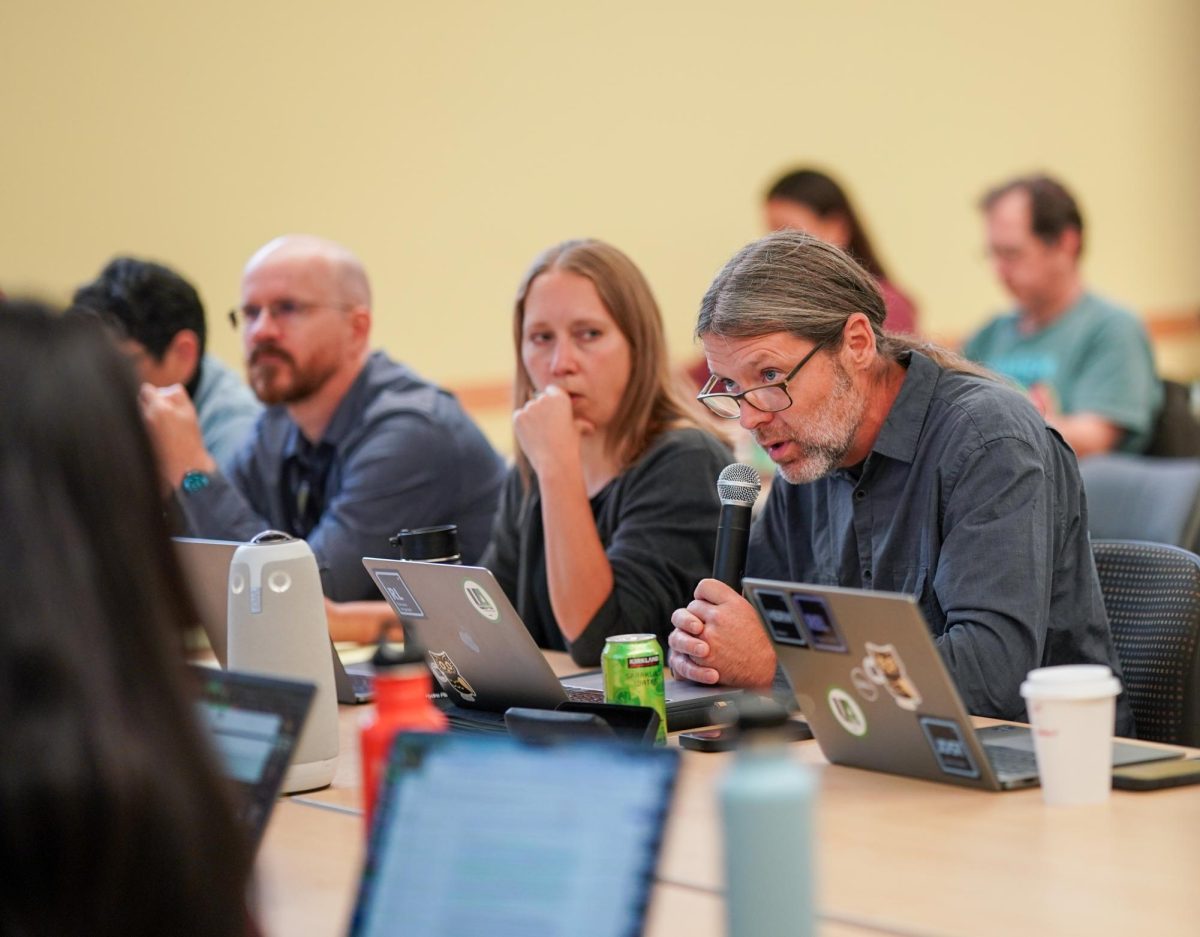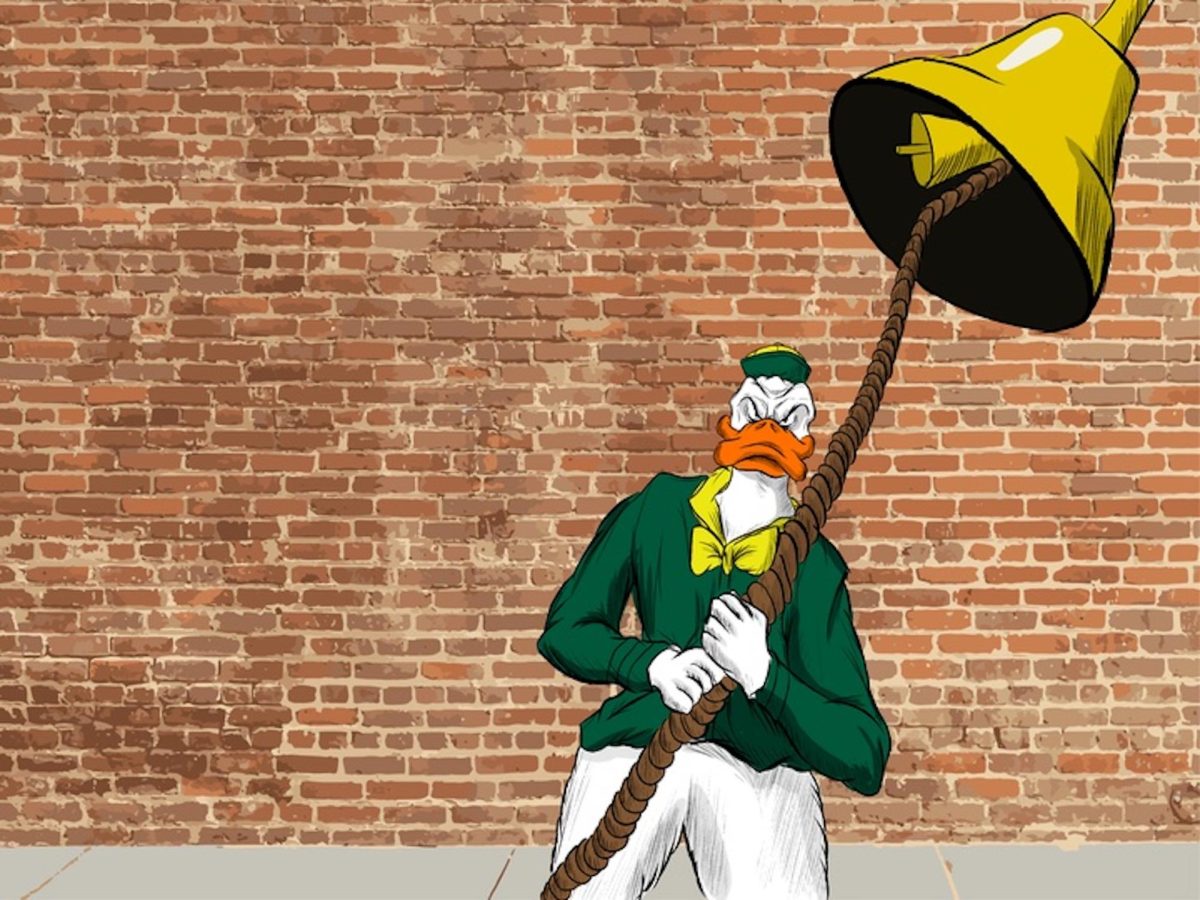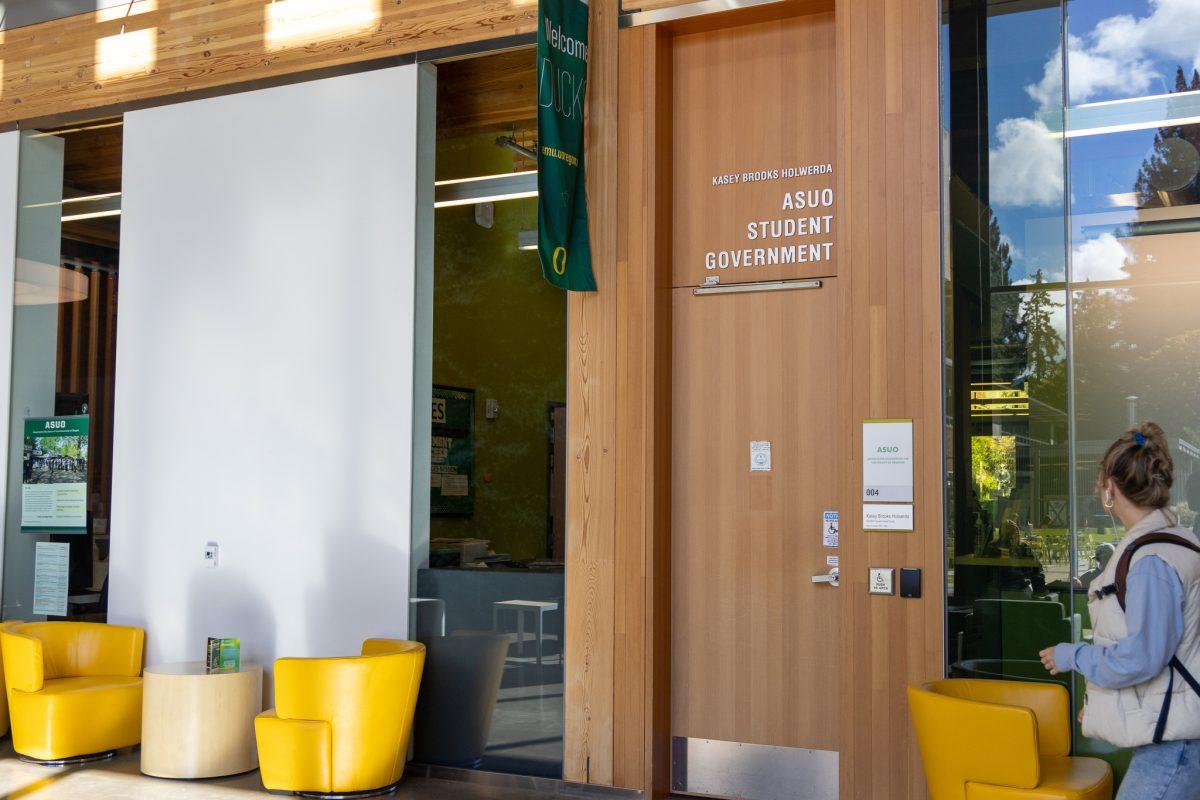Heading into winter term with a new vice president, new implementations and projects, a monthly newsletter and an upcoming couch talk, ASUO is making changes to campus life.
Short for the Associated Students of the University of Oregon, ASUO is UO’s student government. According to its website, ASUO is structured after the federal government and is split between three branches: the executive, legislative and judicial.
The smallest of the three is the judicial branch, made up of the Constitution Court. It consists of five members who serve “lifetime” terms — which means members are elected to sit on the Court until they graduate. According to ASUO’s website, the Court has the authority to rule on any topic covered by the ASUO Constitution. Some of the Court’s responsibilities include upholding the Constitution, ratifying rule changes and reviewing appeals of lower courts like the ASUO Elections Board.
ASUO’s other two branches are the executive branch, which is responsible for tasks ranging from communication with the student body to individual projects, and the legislative branch, which is responsible for overseeing the use of the Incidental Fee through its different subcommittees. The I-Fee is a student-paid fee that supports services and programs under ASUO. Both branches are made up of 24 student leaders in various positions or committees that serve the student body.
The executive branch
The executive branch oversees over 200 student organizations and initiates student experience campaigns, according to ASUO’s website. Its student leaders include a student body president and vice-president as well as various directors and officers.
Isaiah Boyd is the current ASUO student body president. Starting off as the first year representative on ASUO senate, Boyd said he was introduced to ASUO by the president at the time. Boyd successfully ran and became senate president his sophomore year and became ASUO president when he was elected to his first term as a junior.
When describing ASUO to students who don’t know about its different functions, Boyd says he starts with talking about the I-Fee.
“I kind of start from the breakdown of ‘We’re a group of students that are charged with managing a student fee,’” Boyd said. Using the I-Fee, Boyd said ASUO is able to fund certain programs and organizations on campus, like the Multicultural Center.
Boyd said he spent a lot of time during fall term reflecting on the leadership structure of the executive branch. “It’s very hierarchical, and the goal for winter quarter is to kind of flatten it out a little bit with our directors and re-amp our core team.”
The core team of the executive branch consists of the directors, the chiefs of staff, the vice president and the president. Boyd said he wants to open the door to hear the voices of ASUO members outside himself and the vice president when it comes to decision making.
There’s a lot of unique leadership styles that blend really well together,” he said. “For me, I envision a working relationship where we can have a dialogue and conversation.”
Information from ASUO; design by Lynette Slape / Daily Emerald
Following Vice President Odalis Aguilar-Aguilar’s resignation from ASUO during the fall, former Executive Internal Director Vanessa Taylor was appointed as the new executive vice president going into winter term.
Starting in ASUO as the executive secretary of mental health and advocacy, Taylor said the leadership experience and confidence gained from the initial role helped her climb up the executive branch ladder.
“I think my main goal would be with outreach, especially because I’ve noticed a lot of students don’t really know what ASUO is,” Taylor said.
Taylor said the knowledge gained as the executive internal director helps in her current role as vice president. “It’s really nice to have been in that role, so it’s like I understand that side of it, of working with the secretaries and working with other directors.”
The legislative branch and ASUO Senate
A 24-member student senate makes up the legislative branch and is responsible for overseeing the use of the I-Fee. Senate positions include academic seats and seats in one of the four senate subcommittees. These committees are the Athletics and Contracts Finance Committee, the Departments Finance Committee, the Programs Finance Committee and the EMU Board.
According to ASUO’s website, the finance committees recommend the allocation of I-Fee funds for various projects, contracts with service providers and student organizations on campus.
The EMU Board helps with budget, policy and long-range planning for the EMU.
Claire O’Connor — the current senate president — said the week-to-week responsibilities revolve around managing the I-Fee. “The senate is directly responsible for the allocation, re-allocation and everything else to do with the incidental fee,” she said. “So I oversee the senate as well as the different finance committees.”
O’Connor described the executive and legislative branch as different kinds of hierarchies. “For exec it’s definitely a top-down hierarchy where Isaiah is at the top, his vice president underneath him and they oversee everything below,” O’Connor said. “Senate, I’ve always seen as more of an ‘I’m in the back’ type situation, so everyone’s kind of in front of me. I’m in the back, and I just make sure that no one ends up going in the wrong direction or that no one gets left behind.”
O’Connor said the senate president and vice president don’t share the same responsibilities. “The vice president does a lot to assist the president in senate,” she said. O’Connor said that she has given the vice-president different responsibilities so it can be a position somewhat separated from senate president.
O’Connor was first introduced to ASUO during IntroDUCKtion. As a freshman, she served on the senate as the first year representative before running for senate president her sophomore year. “That kind of set the pathway for me to get where I am right now,” she said.
Associated Students of the University of Oregon (ASUO) has a public meeting for the Programs Finance Committee (PFC) on November 15, 2021 in the Miller Room of the Earl Memorial Union. PFC ‘s role with ASUO is discussing and approving budget and stipend help for student organizations at the University of Oregon. (Serei Hendrie/ Emerald)
Irisa Mehta is the new senate vice president, who started at the beginning of this term. Mehta first got involved with ASUO through its internship program. In addition to holding a senate seat, Mehta has also served as the senate ombudsperson, which had its own responsibilities.
“Majority of it was just supervising duties and the fulfillment of duties for senators,” she said. “That included office hours, budget hearings, monitoring absences for senate meetings and also being that point of contact when people needed help transitioning from virtual to in-person.”
As senate vice president, Mehta said her duties include helping O’Connor with tasks, contacting clerks and maintaining senate meeting minutes and sending out the agenda for senate meetings.
Jon Laus is the senate treasurer and the current Programs Finance Committee chair. Laus said his responsibilities include monitoring the senate’s finances while connecting with ASUO Finance to gather information and report back to the senate.
ASUO Finance maintains ledgers for all student organizations funded by the I-Fee.
“If there’s an organization we’re hearing for a surplus request, I gather their ledgers, combine them all together and send them over to the senate so that we all know what is going on,” he said.
Communication with the student body
ASUO Communications Director Sam Simonett said he was concerned with ASUO’s lack of communication with the student body when he joined the executive branch.
“I didn’t find out about ASUO until it was through a direct person who I was having a face-to-face conversation with, and I directly asked about it,” Simonett said, “and I immediately saw that as a concern and a negative going into ASUO.”
Simonett said he has made it his goal to expand ASUO outreach to the wider student body. He said having members of the executive branch and senate hold their own office hours helped with that goal.
“It’s a great chance for anyone in the community to come in and talk to us,” he said. “You can come talk to a senator who may be representing a specific major or someone who controls a department, like myself.”
Another way Simonett said they are expanding outreach is having every ASUO officer spend an hour serving an ASUO-funded organization.
“If you go to various student organizations, there’s a good chance you’ll find an ASUO member sitting in the back room just listening and getting a feel for what’s going on in the student community, and also being there as a person,” he said.
Right now, Simonett said he is working on a student needs survey. He said the survey will be a broad all-student survey that will gather input of where students think the UO campus needs to be improved, where they think ASUO money isn’t going and what their current knowledge of ASUO is.
“Those surveys have never been conducted by UO or even ASUO in the past,” he said. “So we really think that’s going to give us some really important numbers as we think of what new programs to develop.”
Simonett said he would also like to focus on dialogue with incoming and current freshmen. “It’s no better point to advertise ASUO,” he said. “You can learn about it, you can join or not, you can pay attention or you don’t have to, but you know right away.”
He said ASUO will be putting pamphlets in dorms across campus and getting in touch with RAs and living directors to relay ASUO messages and opportunities.
Communicating with freshmen, monthly newsletters and research on how ASUO can better use social media like Instagram are things Simonett said are to be expected this month.
Starting this year, Boyd said outreach with the student body is a main priority for ASUO.
“One of the things we are trying to improve this year is increasing our presence on campus and the way we connect with students,” he said.







